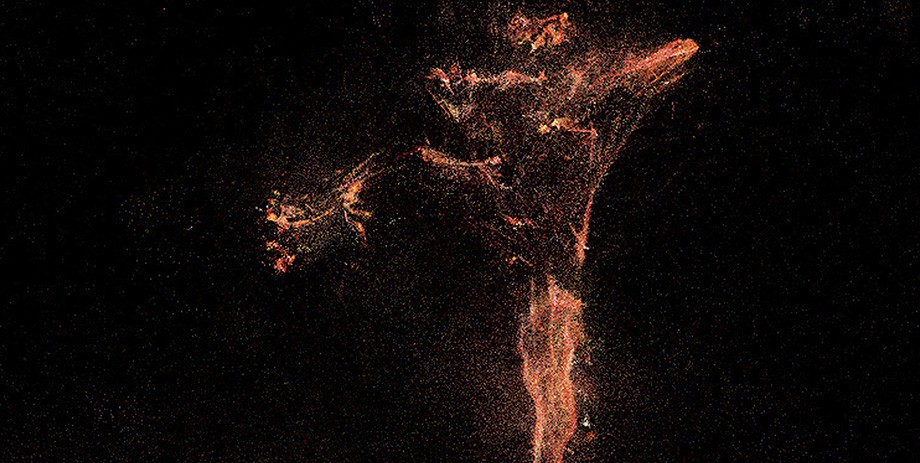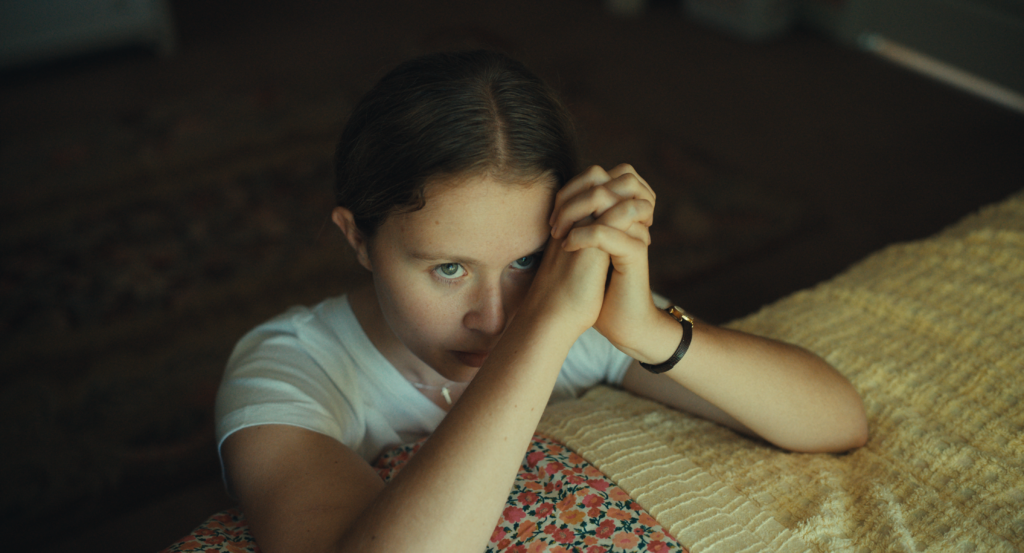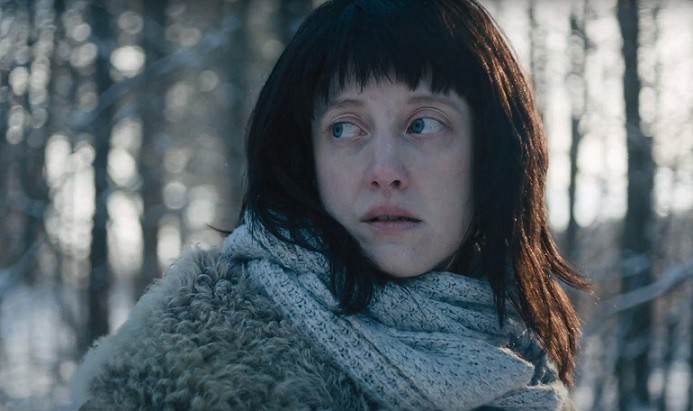Choreographer Martine Époque is the founder of Montreal’s renowned contemporary dance company Groupe Nouvelle Aire and was its Artistic Director from 1968 to 1981. She was also the driving force behind the creation of the Dance Department at the Université du Québec à Montréal, where she taught as a professor from 1980 to 2007. Époque has created more than 50 dance works for stage and screen, many of which have integrated film or video projections. The recipient of the Clifford E. Lee prize for choreography in 1983 and the Prix du Québec Denise Pelletier in 1994, she has devoted her life to the art of “technochoreography” since 1989. (Press materials)
The 11-minute short Coda: the Finale for The Rite of Spring, co-directed by Denis Poulin, will play at the Toronto International Film Festival on September 5 and 7.
WAH: Please give us your description of the film playing.
ME: Coda: The Finale of The Rite of Spring is a short “body-less dance” film about the last three parts of the [ballet] by Stravinsky. The film’s choreographic component was created with MoCap [motion-capture] technology, and its images are exclusively composed of light particles. The use of these particles allowed us to generate a new kind of dance-film language. In Coda, all visual and sound elements appear to be made of the same texture. The dancers have no physical body, their environment has no material form, nothing is physical: only motion, sounds, music, and feelings merged into a flowing creation.
WAH: What drew you to this project?
ME: I created my stage choreography for The Rite of Spring in 1988. It was performed several times in Montreal, Calgary, and Guangzhou, and aired on TV. As 2013 marked the centenary of the premiere of this work, we decided to create another Rite using digital tools to bring it into the 21st century. We kept the work’s original idea, of a sacrificial dance performed in order to renew the earth.
We knew that we would work with MoCap and that we would not give the digital polygonal dancers realistic, corporeal appearances, nor caricatured ones. We also knew that the film would metaphorically allude to terrible events caused and survived by Man, and the Earth, in our modern era. We chose particles to embody motion, as they are the origin of the universe and of life on our planet. This permitted us to emphasize the parity between Man and his environment while treating digital dancing in an entirely new way.
WAH: What was the biggest challenge in making the film?
ME: I’ll discuss only the two main challenges here.
First, creating moving-image particles using MoCap technology requires a very complex and long production pipeline. Moreover, rendering these particles takes a lengthy amount of time. And as particles are living digital elements, moving on their own according to the various attributes (such as weight, speed, shape) given to them by the animator, we don’t know what the visual result will be until everything is completed. This result can often be unsatisfying, obliging us to repeat the process all over again, with new features.
This process is frustrating for a choreographer used to working in a studio with living dancers and an immediate end result. We first had the idea of making a dance film of this type in 2004. We had grants that allowed us to experiment with the techniques required to do it. And we started producing Coda in 2010: it was completed by the end of July 2014.
Second, writing and drawing a story were impossible for the same reason. How to draw and explain something that we’d never seen? I created a kind of storyboard based on the music. (We added a time-code to a video of my stage choreography so we could draw on these numerical data in order to set up the different parts of the new choreography and the content of the MoCap sessions.)
However, the main difficulty was finding producers: as usual, everyone asked for a script. This explains why the National Film Board of Canada (NFB) and FAKE Digital Entertainment (FAKE), even though they’d followed our work since 2010, joined our creative team very late: most of the images had been completed by the time they officially became our producers (at the end of 2012).
WAH: What do you want people to think about when they are leaving the theatre?
ME: I don’t want people to think about one common thing. Coda is non-discursive, just like choreography for the stage. So each audience member’s thoughts about it, or better yet, their feelings, will be different. Moreover, images contain so much information that one can see things that the next person won’t notice. As a result, people will surely think about Coda in dissimilar ways. Even so, the major feeling and thought that I’d like them to keep in mind is the aesthetic ability of such a film to express the need for everyone to take part in the protection and preservation of humankind and the Earth.
WAH: What advice do you have for other female directors?
ME: Even if you have money, access to MoCap technology, and strong choreographic and computer-animation abilities, don’t try to make a film like this if you don’t have a lot of patience, perseverance and a deep affinity for risk-taking.
WAH: What’s the biggest misconception about you and your work?
ME: As this was my first professional film, there were no misconceptions about me. I can add that our work was not misunderstood in any way by our producers because the mandate of the NFB is to promote and push innovation, and because FAKE is a special-effects company largely involved in R&D.
WAH: How did you get your film funded?
ME: As I said before, we had received grants allowing us to experiment with the idea of a “body-less” dance composed of particles, and to produce the film. The first grant came from the Social Sciences and Humanities Research Council of Canada (2005–2008, $250K) and the second one from Fonds de recherche du Québec: société et culture (2010–2013, $100K). We received $3,910 via crowd-sourced funds through Indiegogo. Finally, a major part of the funding came from Denis [Poulin, co-director] and me (we are a couple), since we had no salary throughout the whole process (we have both retired from teaching), and we also invested personal funds in the production.
WAH: Name your favorite woman-directed film, and why.
ME: Gabrielle, by Louise Archambault, because of the way she successfully produced a beautiful and stirring film despite a difficult subject.







